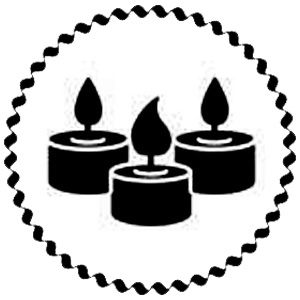Neutral Newspaper Headline: Expert Tips for Effective Color Combination in Home Decor
Summary:
Creating a successful color palette in home decor involves mixing tones from a similar range on a neutral base. Understanding different color palettes can transform your home’s style and aesthetic appeal.
Table of Contents
What is a Color Palette?
A color palette is a collection of chosen tones to paint, decorate, or color any object or surface. Numerous design studies have revealed which color combinations work best.
Monochromatic Palette
A monochromatic color palette involves using a single color along with shades from the same family. Mixing a color with blacks, whites, and grays creates new tones within the same range. For example, choosing a white tone for decor can be complemented with elements like beige or gray.
Complementary Palette
Complementary colors are found on opposite ends of the color wheel, creating a contrasting and daring mix. For instance, purple complements yellow, and green complements red. This combination creates a visually interesting contrast in home decor.
Analogous Palette
Analogous colors are those found next to each other on the color wheel, creating a subtle and pleasant gradation. For example, red, orange, and yellow form an analog color scheme that blends seamlessly. Consider combining shades of blue and green for a harmonious decor scheme.
Utilizing dominant, supporting, and accent colors based on an analog color palette can enhance your decor. Experimenting with various tones and hues within the color family can create a cohesive and appealing look for your home.How to Choose Color Palettes for Interior Design
When it comes to selecting a color palette for your home decor, the decision can be a challenging one. The colors you choose for your walls, furniture, and accessories will define the overall decorative style of your space. With so many color variations available, it is essential to have a criteria based on factors like lighting and materials.
In addition to these considerations, it is crucial to understand color theories such as chromotherapy, which explores the emotional impact of different hues. Colors have the power to evoke certain feelings and sensations in your home. For example, yellow radiates joy and dynamism, while blue signifies creativity and peace. Red symbolizes vitality and raises the temperature, green aids concentration, orange promotes productivity, and pink signifies harmony.
Choosing a color and working with a monochromatic, complementary, or analogous palette can make a significant difference in your space. Remember that combining three tones works well in larger rooms like living rooms or master bedrooms, while smaller spaces benefit from a more limited palette of two colors or a monochromatic scheme.
Recommended Color Palettes in Home Decor
Every home has its own unique style and personality. However, certain color combinations are associated with specific styles and can help create different atmospheres. If you want a warm and inviting decor, opt for a color palette that includes warm tones like earthy colors, beige, taupe, and tan. These colors create a cozy and inviting feel, perfect for year-round use.Neutral Newspaper Headline: Explore a Variety of Color Palettes for Home Decor
Color Palettes for Modern Bedrooms
A relaxing and fresh color palette can be achieved by combining blue-gray upholstery with coral accents and bone-colored walls. This is perfect for modern decorations and ideal for bedroom color schemes.
A Feminine and Subtle Style with Pastel Colors
Utilizing pastel colors will give your space a feminine, subtle, and sweet style. Pale pink, mint green, and “greige” (a mix of gray and beige) are currently on-trend in the world of home decor.
Versatile Neutrals for Every Space
If you prefer a safer option, neutral colors are a foolproof choice as they can complement any decor. The four main neutral colors include white, black, gray, and beige, and can be versatile in various decorative settings.
Brighten Up Dark Spaces with Light Colors
Light colors are essential in spaces with little natural light, as they can help to increase brightness. Cool colors are also beneficial for creating a luminous atmosphere in any room.
Bold and Vibrant Red Tones
For a daring look, consider incorporating bold red tones into your decor. Pairing red with gray or olive green can bring stability to the room, while a touch of pink mixed with red can create an attractive and impactful color palette.
Elevate Your Nordic Style with Contrasting Colors
If you love Nordic style, experiment with contrasting color palettes to enhance your decor. Adding pops of color to a white base can take your Scandinavian-inspired space to the next level.Neutral Headline: Explore the World of Color with Versatile Palettes
Creating an Elegant Style with a Combination of Colors
Light wood, mustard textiles, dark gray walls, and black decorative items can transform a space into an elegant style. For smaller or dimly lit rooms, opt for light gray instead of anthracite.
Creating a Sophisticated Ambiance with Turquoise, Salmon, and Light Blue
Turquoise, salmon, and light blue can bring serenity and sophistication to any setting. For a more classic feel, consider a palette of dark colors including black, navy blue, moss green, lead gray, and terracotta.
The Useful Tool to Elevate Your Color Play: Pantone Book
To bring these ideas to life, get a Pantone book to experiment with creating your unique color combinations. Pantone, the authority on color, produces these color cards with various color tones and formulations in different codes like HEX, CMYK, and RGB. The book includes color samples, references, names, and exact formulas.
Discover Your Perfect Color Palette for Home Decor
We hope this article guides you in finding the ideal color palette that suits your home decor.
